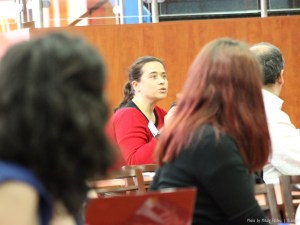









This gallery contains 10 photos.

Pécs University Days 2013 – Press Conference / photo: Szabolcs Csortos, UNIVPécs
Date of event: 2013. April 24. 14:00 – 2013. April 27. 23:00
In 2013 PEN offers again wilde range of stages, concerts and off-programmes. Fresh and exciting Hungarian and foreign bands are coming!
Some of the bands and programmes:

The welcome reception will take place in CELLA SEPTICHORA which had been built in the 4th century AD, the seven-foiled ground-plan of this late-Roman building is unique in the Danube region. Descending four to six metres to the former Roman surface level, we can see the wall, which remains two metres tall in parts.
It might be interesting for YOU that:
The medieval and the modern city of PÉCS cover the full area of its predecessor from the Roman times so the architectural exploration could hardly get appropriate source materials. For a long period only the late Roman burials have served with clear proof about the city that used to be there. It were the excavation works starting at the beginning of the 20th century and the urban development projects of the recent decades due to which the borders of the city of Sopianae have started to outline.
The largest scale investment programme of the Pécs2010 – European Capital of Culture Project was the reconstruction work carried out on the area of the Zsolnay Porcelain Manufacture; turning part of the old factory into the largest cultural quarter of Central-Eastern Europe.
Tünde Minorics: Behind the Mask : the Busó Festivities at Mohács and the World of Busó
The Busó festivities at Mohács in southern Hungary are a six-day carnival in late February to mark the end of winter, named for the busós, frightening-looking costumed people (traditionally men) wearing wooden masks and big woolly cloaks. The festival is multifaceted, including a children’s costume contest, a display of the art of mask carvers and other craftspeople, the arrival of more than 500 busós in rowboats on the Danube for a march through the city alongside horse-drawn or motorized fantasy vehicles, the burning of a coffin symbolizing winter on a bonfire in the central square, and feasts and music throughout the city. The tradition originated with the Croatian minority in Mohács, but today the busó is a general emblem of the city and a commemoration of the great events of its history. More than a social event, the carnival is an expression of belonging to a city, a social group and a nation. It plays an important social role by offering a chance for self-expression in a communal setting. The arts underlying the festivities are preserved by self-organized groups of busós of all cultural backgrounds, many of whom pass on the techniques of mask carving and ritual celebration to younger generations.
Source: http://visit-hungary.com/culture/world-heritage-sites/buso
Course Planning
of
“Roles in mapping, defining & building recognition of cultural heritage.”
Stream-coordinator of the Thematic (A. Campelo)
Course units:
A. Material and Immaterial Heritage Relationships with Local Communities as a form of Social Intervention. Lessons learned from cultural heritage projects.